Unearthing the 32-Year Mystery of Crashed Eastern Airlines Flight 980
How browsing Wikipedia opened the door to a decades-old mystery.
— -- The two young men are no strangers to adventure. Memorabilia from their physical accomplishments adorn one of the men's small Boston apartment. From handmade signs of support for a recent marathon to photos from a New Year’s hike to a Maine mountaintop, dog in tow.
But the evidence of a not-long-past journey remains fresh around the home.
A small silver-handled shovel leans against the drywall in the corner, and a beautiful multicolored runner with flowing South American prints lines the modest dining room table.
The apartment’s souvenirs are remarkable, but what lies in an unassuming cardboard box is where history, tragedy, mystery and extraordinary physical feats intertwine into a story that must be seen to be believed.
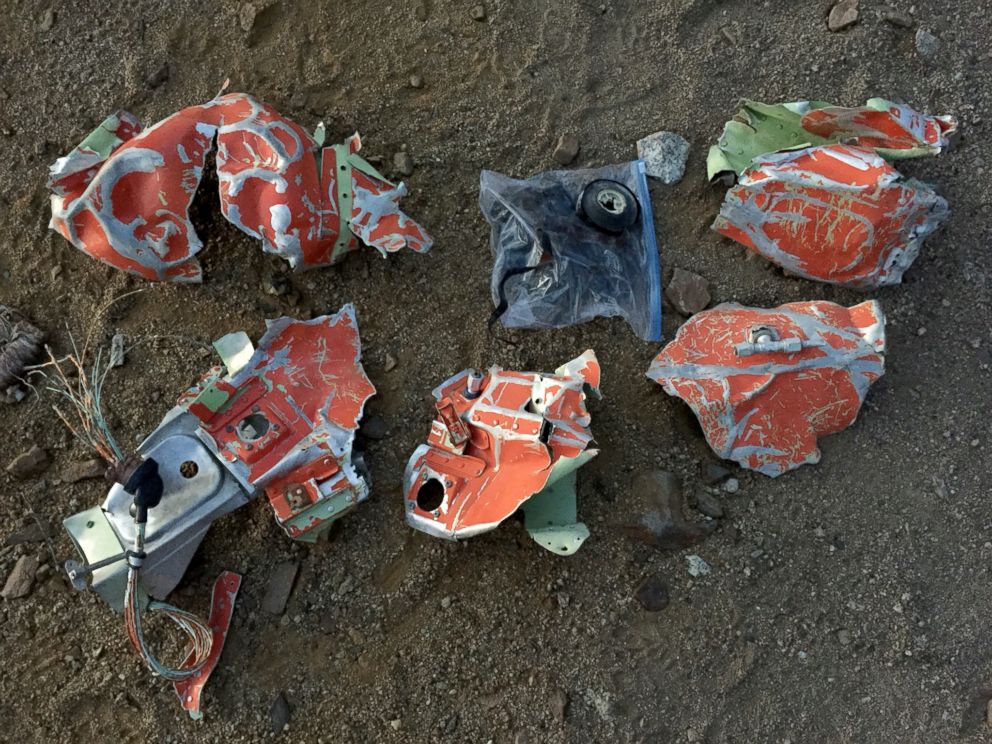
Dan Futrell, 33, and Isaac Stoner, 31, are, at first look, regular young professionals. But dig a little deeper and the lives of two extraordinary Bostonians begin to surface.
A peek at Futrell’s resume evokes a vision of someone who could run for public office.
The clean-cut, Army Ranger–qualified, decorated Iraq War veteran turned in his rifle for a desk job. The graduate of Gonzaga University in Spokane, Washington, and Harvard’s Kennedy School of Government in Cambridge, Massachusetts, also holds a seat on the Somerville School Committee just outside Boston.
He recently worked for a company aggregating data from the internet.
Stoner is a biotechnologist by way of the Brown University sailing team and the MIT Sloan School of Management, also in Cambridge.
Futrell pointed out a prominently mounted 2-foot-tall trophy memorializing a second place finish in a local 5K run. He otherwise wouldn’t be so quick to brag about such a result, except that Stoner finished two places behind him.
Like a pair of brothers, everything is a competition in the life of these suburban Boston close friends and former roommates.
Futrell and Stoner have spent the past few years in a constant search for ways to physically and mentally push each other to the limit. A recent trip to a summit in Bolivia became the pinnacle of that.
Their journey began in 2015 where many quests for answers did.
Wikipedia.
The mystery of Malaysian Airlines Flight 370 took them to a page of the then-19 unrecovered flight recorders in the history of worldwide aviation. One of them stood out for the adventurers.
Eastern Airlines Flight 980.
The reason? Inaccessible crash site.
“Isaac and I looked at that and said, 'Come on, people have been to the moon. People have been to the top of Everest. What does ‘inaccessible’ mean?” Futrell said.
A year later, Futrell would find the answer to his question.
On New Year’s Day 1985, Eastern Airlines Flight 980 was on its way from Asuncion, Paraguay, to Miami. The flight was scheduled to stop first in La Paz, the legislative capital of Bolivia, then Guayaquil, Ecuador, before a final leg to the United States.
The airport serving La Paz, known as El Alto, is the highest international airport in the world. The runway is perched at just over 13,000 feet above sea level.

Skyscraping mountains surround the airport, and pilots need a special certification to land there.
“It’s basically a slam dunk,” ABC News consultant and former National Transportation Safety Board official Tom Haueter said. “You have to come in from high altitude, quickly descend down to the airport. This is not your typical airport approach at all.”
El Alto did not have radar, and regular cloud cover made the approach all the more challenging.
In 1985, if pilots were unable to spot the visual cues to the airport, they were effectively flying blind.
On the night of the ill-fated flight, the pilots of Eastern Airlines Flight 980 faced a cloudy night with thunderstorms in the area.
Bolivian air traffic controllers cleared the Boeing 727 to descend to 18,000 feet on its approach to La Paz.
That was the last communication with the doomed flight.
What Bolivian controllers did not know was that the flight was several miles off course.
The plane crashed into the south side of the 21,000-foot Mount Illimani at an elevation of 19,600 feet, killing all 29 people on board, including eight Americans, one of whom was the wife of the ambassador to Paraguay. The accident was, at the time, the highest-elevation plane crash in the world.
It was so high that rescue helicopters could not reach the site. It had to be accessed by foot.
An international effort to recover the plane, its passengers and the flight recorders began immediately.
The U.S. National Transportation Safety Board assisted the Bolivians in the investigation, but no one could make it to the crash site for days.
When some climbers did get to the site, they were unable to remain long at the extreme altitude, and their search for clues was fruitless.
An expedition was sent later that year in another attempt to locate the flight recorders, according to Federal Aviation Administration documents. Investigators reached the accident site, but poor conditions and altitude sickness forced the team to turn back without recovering the recorders.
The investigation then came to a halt, with no definitive cause for the crash determined. At least three private searches were mounted but came up empty-handed as well.
Futrell and Stoner had some impressive physical feats under their belts, but they had not tried to climb to such an altitude, never mind remain there for days.
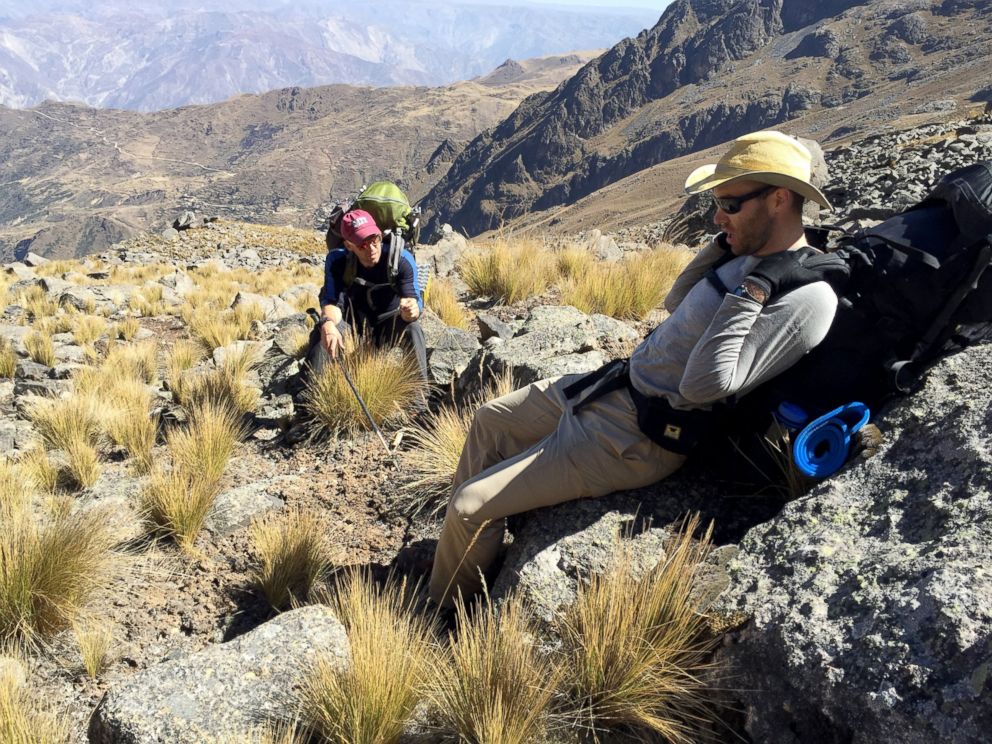
They got in contact with family members of the victims and those who had spent much of their lives looking for answers.
Stacey Greer was among them.
Her father, Mark Bird, was the engineer and second officer aboard Eastern Airlines Flight 980. He wasn’t even supposed to be on the plane that day; another crew member had fallen ill, and Bird replaced him, Greer said.
Greer, who was only 2 at the time of the crash, connected with Futrell and Stoner in April this year after author and former Eastern Airlines pilot George Jehn spotted Futrell and Stoner's blog.
Jehn’s book, “Final Destination: Disaster: What Really Happened to Eastern Airlines,” is packed with research, theories and questions about the circumstances of the flight.
From questioning why the route existed in the first place to why the recovery effort was fruitless, the book examines the mystery of Eastern Airlines Flight 980.
Futrell and Stoner began training to attempt to find answers to the mystery.
By day they ran, often with packs strapped to their backs as they endured the steps at the Harvard football stadium.
They rented an altitude tent in which they would alternate sleeping before their departure to recreate the atmospheric conditions they would be facing atop Mount Illimani. By the time they left for Bolivia in mid-May of this year, they were sleeping at the equivalent of 16,000 feet in their basement.
Just days after arriving in La Paz, they were climbing Illimani with a guide, a cook and a journalist from Outside magazine, Peter Frick-Wright.
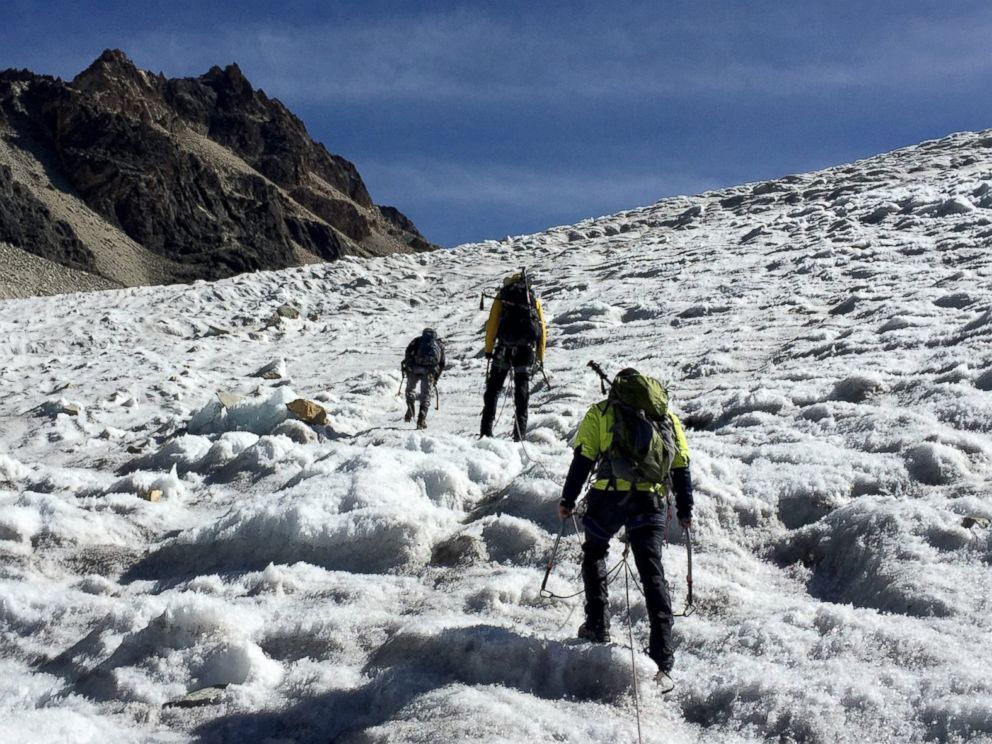
The first sign of the crash they found on their two-week trip was a life jacket at an abandoned mine. Someone had apparently carried it from the debris field down to the mine. “That’s the first time where it was kind of real,” Futrell said.
The next day, they were off to the debris field, heading straight toward the summit.
Futrell and Stoner knew their mission was a difficult if not impossible one. So they prepared themselves for the reality of their operation.
“So we kind of outlined minor wins along the way,” Stoner said. “The first was just getting to the debris field, seeing that there were plane parts there.”
As soon as they reached the crest of a moraine on their path to the debris field, they spotted a landing-gear wheel.
The first win, at 16,000 feet.
They were in the right place, but the debris field was larger than they anticipated.
They had a plan to carefully cover the field in a grid, but now the plan was off. There were plane parts everywhere, scattered over about a square mile, they estimated.
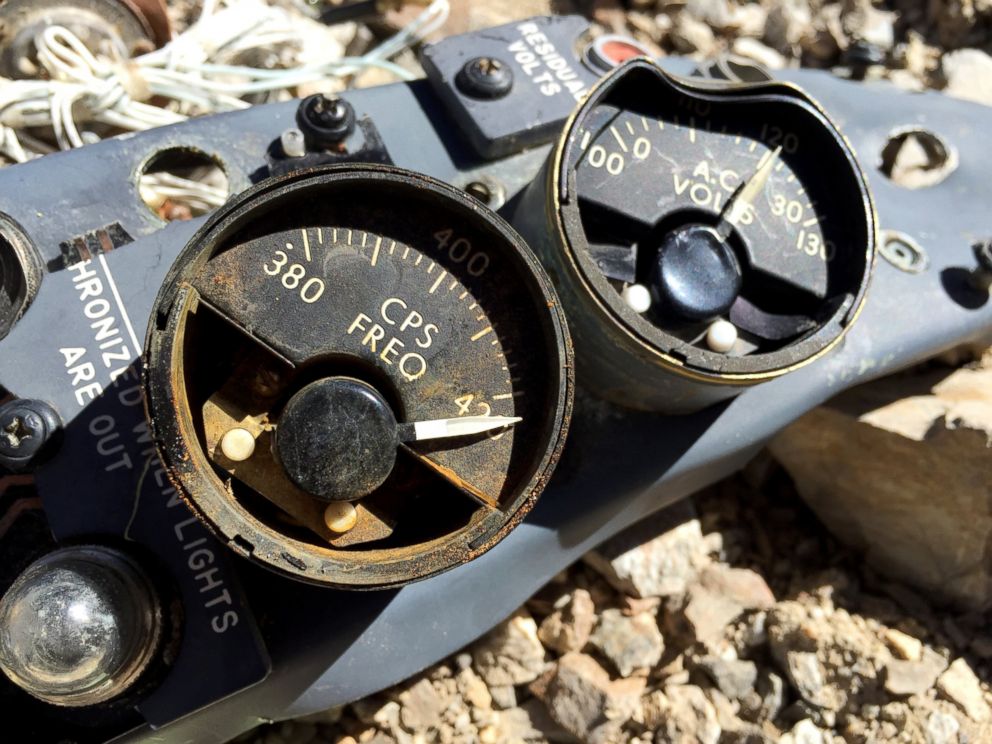
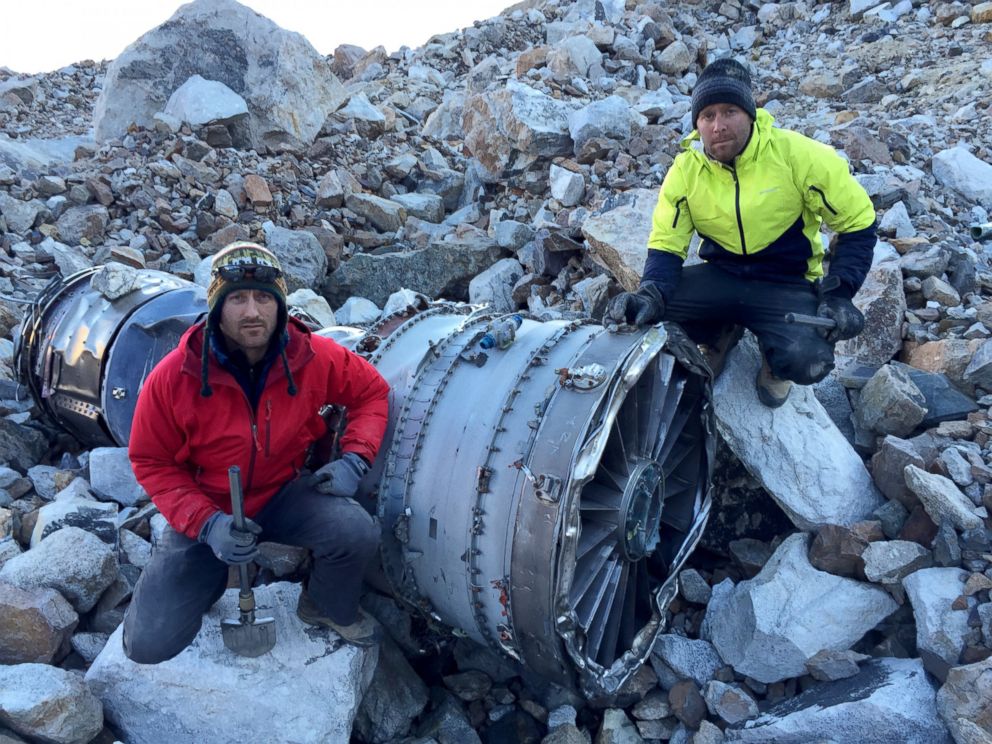
Along with plane parts, human remains were constant finds during their days on Mount Illimani.
The weight of the discovery is evident on the faces of the two former roommates when they speak of it, even months after their return. Their decision about what to do with the remains is evidently not one they took lightly.
Futrell and Stoner decided to bury the remains and mark each one with GPS coordinates in case family members wanted to locate them.
They spent four days searching the area, finding various plane parts and human remains but no sure sign of the flight recorders.
They held on to hope that they would discover an intact black box.
Soon Futrell found a damaged spool of tape. It appeared to be the same kind of tape that would have been in a black box used in the 1980s. He knew it could be important. Another win but not confirmation.
On their last day, just below 17,000 feet, Stoner flipped over a piece of metal with a bundle of wires. On that bundle was a strap reading “CKPT VO RCDR.”
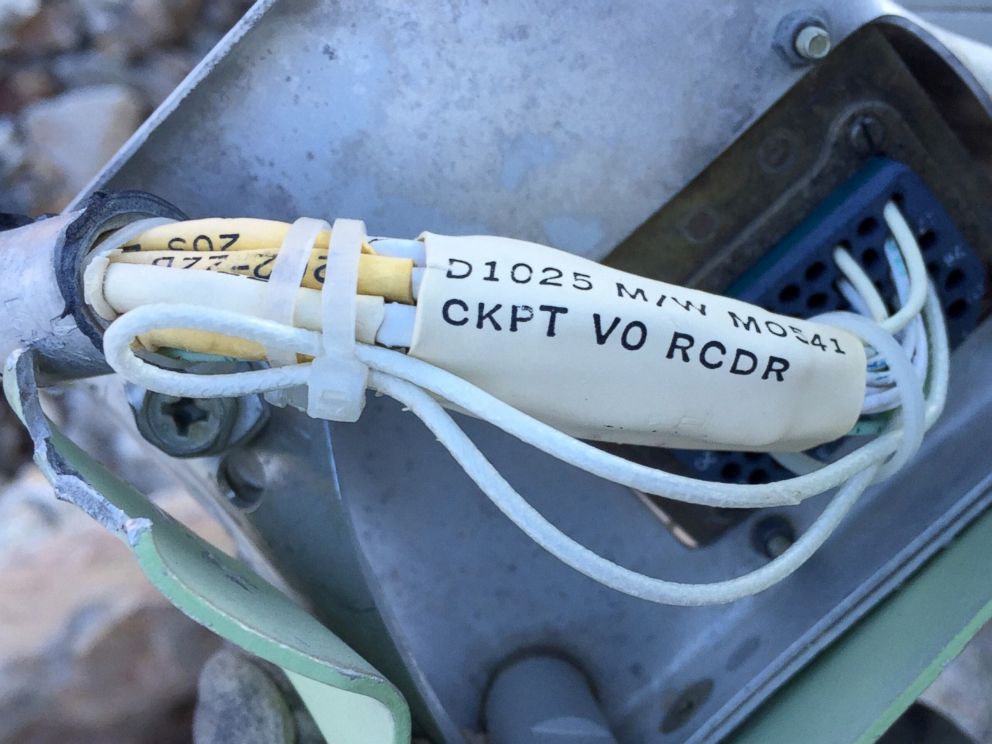
Cockpit voice recorder.
Stoner said it was a surreal moment. “We're standing there on this beautiful mountainside holding this thing that we come a long way to find, that people had claimed had been stolen or hidden, and there it was,” he said.
But there was no jumping up and down. No high-fiving. A calm washed over Futrell and Stoner. The significance of what they had done began to sink it, but they were disappointed that it wasn’t more intact.
They wanted to make sure the remnants of this black box got in the right hands.
In a cardboard box, they packed up about six pieces of metal and the tape and returned to the United States. Futrell and Stoner contacted an official at the NTSB, who said the agency was excited to hear about their findings but itss hands were tied.
International regulations prohibit them from touching the tapes without the consent of the Bolivian government.
So Futrell and Stoner’s new mission was to get the green light from the Bolivians.
For months they called, emailed and wrote certified letters to the Bolivian Embassy in Washington, D.C., hoping to get such a decision. Their inquiries went unanswered.
Capt. Edgar Chavez, the operations inspector at the General Directorate of Civil Aviation of Bolivia, told ABC News over the phone Dec. 1 that the Bolivian government intended to allow the NTSB to look at the tapes.
He was unable to say when that would occur, however, adding that his agency was “still working on the paperwork.” He confirmed the authenticity of an email that Bolivian aviation officials sent to Futrell and Stoner, saying the Bolivians will hand the investigation over to the NTSB.
Chavez has not responded to follow-up calls and emails from ABC News requesting an update or another interview.
ABC News also called, emailed and sent certified letters to the Bolivian Embassy in Washington, D.C., and the Bolivian office at the United Nations in New York City.
Bolivian authorities did not respond to questions or a request for an interview.
The Bolivians still hold jurisdiction over the investigation into Flight 980, and the NTSB is referring all questions to its Bolivian counterpart.
“I think anybody at the NTSB wants to know now what happened to this airplane,” said ABC News’ Haueter. “It was a big mystery then. It still is, and one thing we don't like, as aviation safety people, is not having closure on something.”
Meanwhile, Futrell and Stoner have returned to their daily lives. They have moved in with their respective girlfriends, with Futrell remaining in the same apartment where the journey of their lives began.
The black box, containing possible answers to a nearly 32-year-old mystery, remains in the unassuming suburban Boston home, untouched by a single aviation expert.
As for the unusual former roommates, they are in search of their next adventure and are hoping this one ends before the next one begins.
ABC News’ Erin Dooley contributed to this report.




